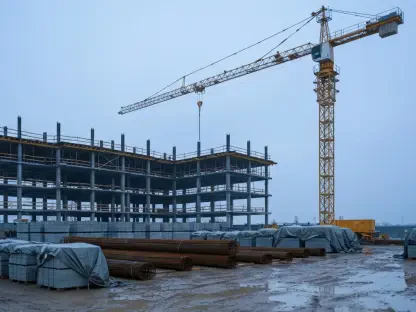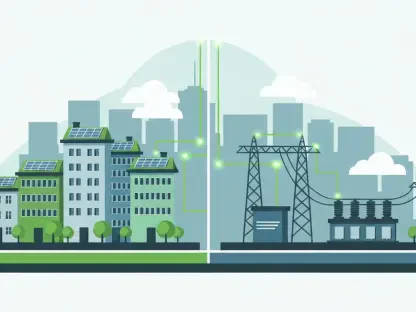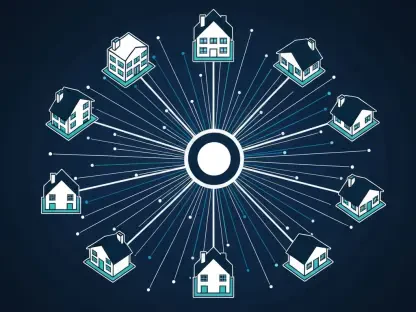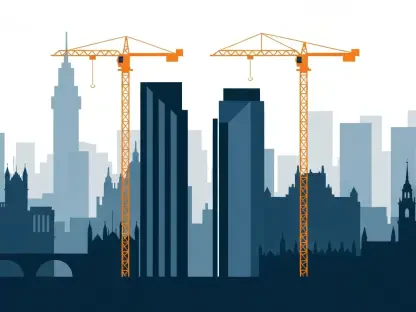The American elevator and escalator market is experiencing notable expansion driven by the convergence of digitization strategies and extensive infrastructure investments, altering urban landscapes across the nation. Economic analysts anticipate that the sector will maintain a compound annual growth rate (CAGR) of 2.65% through 2030, indicative of sustained demand and robust industry momentum. This growth trend suggests a pivotal shift, redefining the installation, modernization, and technological integration of vertical transportation systems throughout both commercial and residential domains.
Structural Evolution of the Market
Increasing Demand through Urbanization and Infrastructure Initiatives
A significant surge in urbanization patterns, accompanied by rapid infrastructural updates, has emerged as a primary catalyst fueling this growth. As the nation moves forward, housing projects and expansion initiatives under the Department of Housing and Urban Development (HUD) and other agencies provide fertile ground for the industry’s upward trajectory. The federal government’s commitment of $62 billion towards infrastructure development—from transportation networks to housing—is a compelling driver enhancing the scope and scalability of the elevator and escalator market. States like Texas and Florida exemplify this movement, with Texas allocating $3.5 billion towards data centers and Florida earmarking a $14.8 billion strategy to bolster transportation infrastructure, thereby setting the stage for innovation and increased accessibility in densely populated urban sectors.
Modernization as a Core Component of Industry Advancement
Modernization represents a significant aspect of industry growth, with the revitalization of pre-existing elevator systems at its forefront. The modernization sector was valued at USD 3.23 billion in 2025, capitalizing on advancements in safety and efficiency that technology offers. Renovation projects focused on improving existing infrastructure in residential dwellings and commercial spaces have been evident. This trend is underscored further by technological transformations in elevator systems across numerous sectors. Noteworthy vendors within the market, including industry leaders such as Schindler and OTIS, have exemplified this capacity for modernization by introducing systems aimed at enhancing consumer experience and reducing carbon footprints. As public and private sectors alike invest in infrastructural updates, vertical transportation systems continue to play a pivotal role in advancing modern living standards, reflecting transformative changes throughout the architectural landscape.
Technological Integration and Market Innovation
AI Implementation and Data-Driven Oversight
Artificial Intelligence (AI) is redefining elevator and escalator market dynamics by incorporating predictive maintenance and user-efficient safety measures that elevate operational standards. Industry pioneers like KONE and OTIS are spearheading innovation with AI-driven solutions capitalizing on sensor-based data to monitor and preempt potential system failures. These cutting-edge technologies not only enhance reliability and performance but also minimize downtime, providing seamless accessibility and safety enhancements to consumers. By optimizing asset management through intelligent solutions, vendors can streamline operations and reduce maintenance costs, fortifying industry expansion and presenting substantial growth opportunities across urban settings. AI’s transformative influence is reshaping the industry, presenting new pathways by leveraging real-time data intelligence to optimize system integrity.
Vendor Expansion and Strategic Initiatives
Prominent vendors are actively extending operations and implementing strategic partnerships to leverage evolving market conditions. The inclusion of significant players such as ATTA Elevators marks an international expansion trend, with the establishment of operations in key U.S. regions such as St. Louis, Missouri, reinforcing cross-border synergy and collaborative exchanges. Noteworthy advancements, including Schindler’s introduction of the Schindler 5000—a machine-room-less (MRL) elevator targeting specific residential and commercial buildings—are prominent examples of industry innovation directed toward scalable solutions. OTIS confirmed its commitment to expanding operations through strategic acquisitions of Urban Elevator locations, strengthening its foothold within the market. These developments illustrate the adaptive strategies vendors employ to capture and sustain market relevance, inspiring collaborative innovation and synergistic growth.
Geographic Influence and Sectoral Contributions
State-Level Infrastructure Developments
Diverse infrastructural developments across specific states undeniably impact market dynamics, as regions such as California and New York experience unique infrastructural transformations. The California High-Speed Rail project is a pivotal undertaking aimed at enhancing connectivity from Merced to Bakersfield while simultaneously empowering renewable energy strategies such as the South Brooklyn Marine Terminal project. New York’s vision of renewable energy integration through offshore wind initiatives exemplifies the state’s commitment to sustainability and infrastructural support. Conversely, Texas’s engagement within the residential construction sphere is facilitated by significant investments in housing development as major industry players contribute to expansion initiatives, shedding light on diverse geographic dynamics influencing elevator and escalator market advancements.
Sectoral Demand and Segmentation Variability
The American elevator and escalator market is undergoing significant growth, largely due to the fusion of advancing digital strategies and major investments in infrastructure, which are reshaping the urban landscape across the United States. These changes are not only enhancing the functionality of cities but are also impacting the way buildings are designed and utilized. Industry experts predict that this sector will continue to see a compound annual growth rate (CAGR) of 2.65% until 2030. This steady growth rate highlights a consistent demand and indicates strong momentum within the industry.
The evolving trends in the sector point towards a transformative era in the installation, modernization, and technological integration of vertical transportation systems. Both commercial and residential domains are witnessing this shift, leading to more efficient and advanced systems. As urban areas continue to develop, the role of elevators and escalators becomes even more crucial, ensuring smooth transportation and accessibility within high-rise buildings. Continuous innovation in this field suggests that the integration of smart technologies could redefine user experiences and operational efficiency.
In summary, the American elevator and escalator industry is set on a path of growth and evolution, influenced by technological advancements and infrastructure developments, shaping the future of urban mobility in significant ways.









